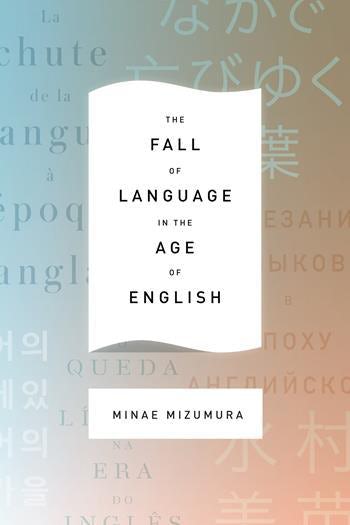Sei Shōnagon: Why Gender Stereotypes of an Ancient Woman Writer Still Resonate Today

“Meticulously researched and persuasively argued, Unbinding The Pillow Book offers a dynamic portrait of one of the most important works of world literature and of the woman who wrote it more than a millennium ago. The Pillow Book has long been one of my favorite books; now, having read this engaging, wide-ranging exploration of the different meanings it has come to embody in everything from seventeenth-century commentaries to twenty-first-century popular culture, I see it as I have never seen it before.”
~Michael Emmerich, University of California, Los Angeles
We are continuing to celebrate Women’s History Month with this week’s feature Unbinding the Pillow Book, by Gergana Ivanova, associate professor of Japanese literature and culture at the University of Cincinnati. In this guest post, Gergana discusses the lasting impact of ancient Japanese author Sei Shōnagon, a highly educated woman who felt the weight of patriarchal limitations in her time, and whose story repeats itself today in the lives of women globally and in Modern Japan. Gergana offers a refreshing look at the “tragedy” of the talented woman–a suppression of knowledge and capability that results not from word of mouth, but from patriarchal fear.
Remember to enter our drawing for a chance to win a copy of the book!
• • • • • •
Japan, over the centuries, has been the cradle of many extraordinary women from all walks of life. Unfortunately, their stories were primarily narrated by men and influenced by dominant ideologies instead of by reliable sources and the women themselves. These narratives usually diminished the accomplishments of powerful Japanese women and their remarkable efforts to gain access to resources that were typically only available to men. Instead, Japanese women were eroticized, idealized, or criticized by male writers and artists who manufactured distorted images for targeted audiences. I came to understand firsthand how such stories and images were created through my archival work for my recently published book: Unbinding the Pillow Book: The Many Lives of a Japanese Classic. In uncovering the story of one such accomplished Japanese woman, I further understood how these distorted images and narratives gained power and momentum. Knowledge about such processes can help us all in the struggle for gender equality.
“Instead, Japanese women were eroticized, idealized, or criticized by male writers and artists who manufactured distorted images for targeted audiences.”
The woman I wrote about was highly educated, proficient in a foreign language, and had an elite career. This description applies to successful professionals today, but she lived about a thousand years ago. Known as Sei Shōnagon (964? −after 1027), she was employed as an attendant to an empress in the late tenth century. Sei Shōnagon’s own literary prowess suited the interests of the political elite as she was well-versed in classical Chinese with extensive knowledge of both Chinese and Japanese literature. Women of Sei’s generation created a literary heritage that makes Japan stand out in the global arena. In no other culture did women produce literature of such a quality and quantity this early in world history. Sei Shōnagon’s most celebrated achievement is her collection of observations, lists, and experiences during her career titled The Pillow Book (Makura no sōshi, early eleventh c.). More importantly, however, The Pillow Book over the centuries has inspired many writers, artists, scholars, and filmmakers within and outside Japan to discover the woman Sei Shōnagon and make sense of her writing.
Sei Shōnagon’s story has been repeatedly told and fabricated, but at the core of all these narratives stood the fact that she was a highly talented and knowledgeable woman. Medieval readers encountered her as an aged and impoverished nun— a natural retribution for her learnedness and boastful display of it in her younger days. On the pages of early modern erotic fiction, she appeared as a courtesan who was well-versed in the ways of love, while to many young women she was presented as an embodiment of quick-wittedness and literary erudition. In the late nineteenth century, Sei Shōnagon came to represent negative qualities that were discouraged in women and she was criticized for her arrogance, haughtiness, and impertinence for displaying superiority over men. These stories show how ideologies, such as Buddhism, neo-Confucianism, and modernisation viewed talented women differently. The diverse images of the ancient writer reveal men’s anxiety about women who surpassed their male peers in various periods of Japan’s history and present what it has meant to be an accomplished woman over the centuries.
“The diverse images of the ancient writer reveal men’s anxiety about women who surpassed their male peers in various periods of Japan’s history and present what it has meant to be an accomplished woman over the centuries.”
Extraordinary women like Sei Shōnagon remind us of the limits women continue to confront in the present day. Despite the initiative of the current government to create a “society in which women shine,” Japan continues to rank extremely low in the World Economic Forum’s Global Gender Gap Index. With a male-dominated parliament and media, the achievements of Japanese women and the challenges they face because of egregious gender inequality do not always make it to the spotlight. It is predominantly at the grassroots level that attention has been drawn to issues such as women’s limited access to key positions in business and politics, sexual harassment, and pressure to put family before career. At a time when the country is moving towards increased female participation in the labor force, but at the same time grappling with the strong influence of traditional gender roles, images of Sei Shōnagon as a young working woman who passionately expounds on issues related to female subjectivity burgeon in popular culture.
“Extraordinary women like Sei Shōnagon remind us of the limits women continue to confront in the present day.”
Even a thousand years later, writers continue to borrow her voice to convey messages to readers. For example, manga adaptations of The Pillow Book introduce Sei as a single mother with a successful career who questions ingrained gender expectations for women pertaining to marriage and childbirth. Emerging as outspoken, competitive, and brimming with confidence, Sei expounds on marriage and career and the ability to be a diligent and dedicated employee without negotiating between work and family. One work even presents Sei’s amusing critique of women for whom happiness and success in life means “becoming full-time housewives, bearing a child to the man she loves, staying at home, getting a flower on wedding anniversaries, and being praised when she prepares a delicious meal.” [Splendid Even Today: The Pillow Book (Honjitsu mo ito okashi: Makura no sōshi, 2014)]. In another comic book adaptation, she talks down to an elite man, stating that “women, too, should work” [Japanese Literature a Japanese Should Know (Nihonjin nara shitte okitai Nihon bungaku, 2011)]. Thus, as if joining the effort for women’s empowerment today, Sei Shōnagon’s images as a career-driven woman continue to offer inspiration to many on their journey of self-discovery and draw attention to the artificiality of gender roles.
“Thus, as if joining the effort for women’s empowerment today, Sei Shōnagon’s images as a career-driven woman continue to offer inspiration to many on their journey of self-discovery and draw attention to the artificiality of gender roles.”
Unbinding the Pillow Book traces the images of Sei Shōnagon and the history of interpretations of her Pillow Book from the seventeenth century to the present. It shows how in a male-dominated society, women’s literary works are evaluated based on different standards, with ideas about gender expectations and roles coming to the fore. Exposing the constructed nature of traditional femininity and problematic approaches to literary studies that elite male scholars embossed upon Sei Shōnagon and her work, Unbinding The Pillow Book demonstrates that negative images of accomplished women, and stereotypes about women in general, emerge not because of their incompetence, but because of the fear of powerful women that a patriarchal society sustains.








